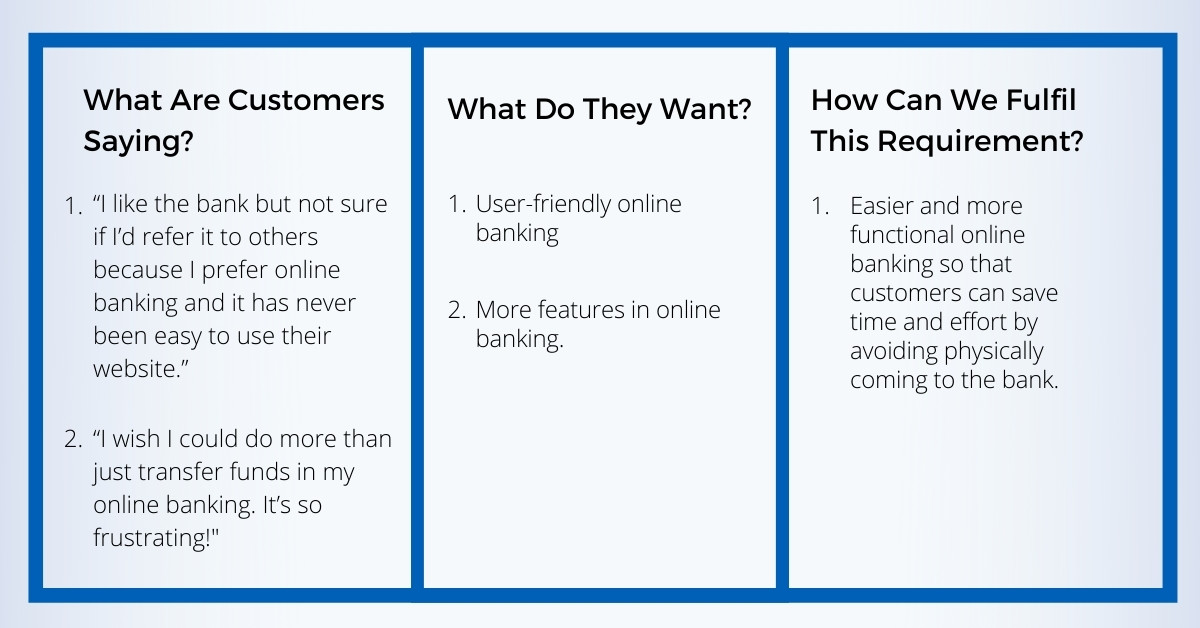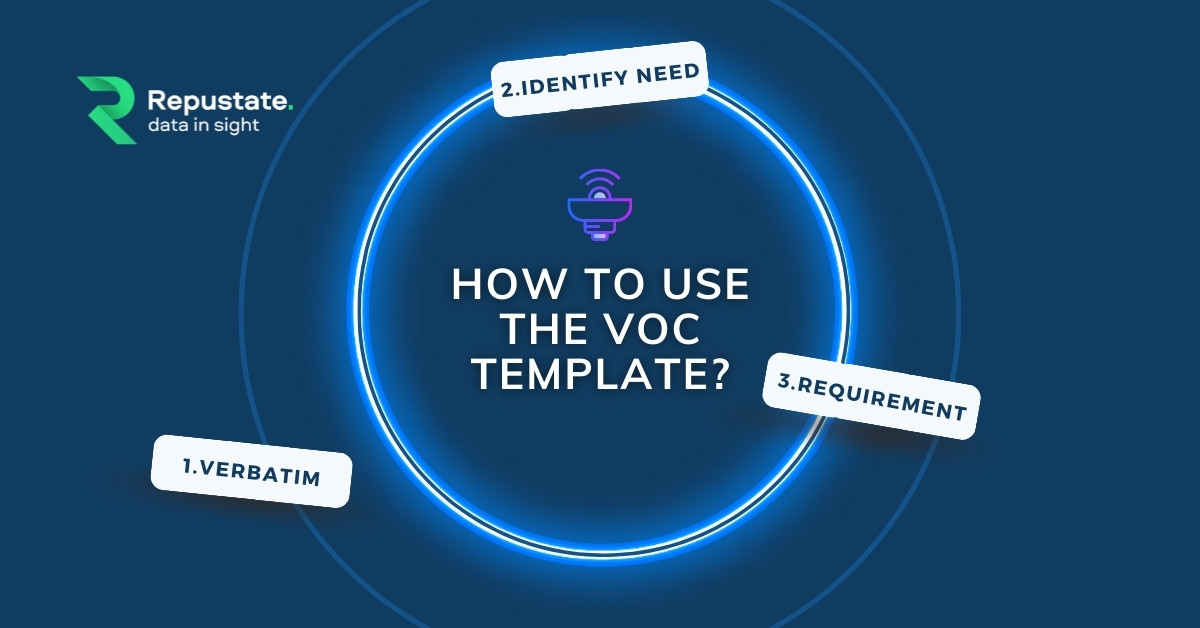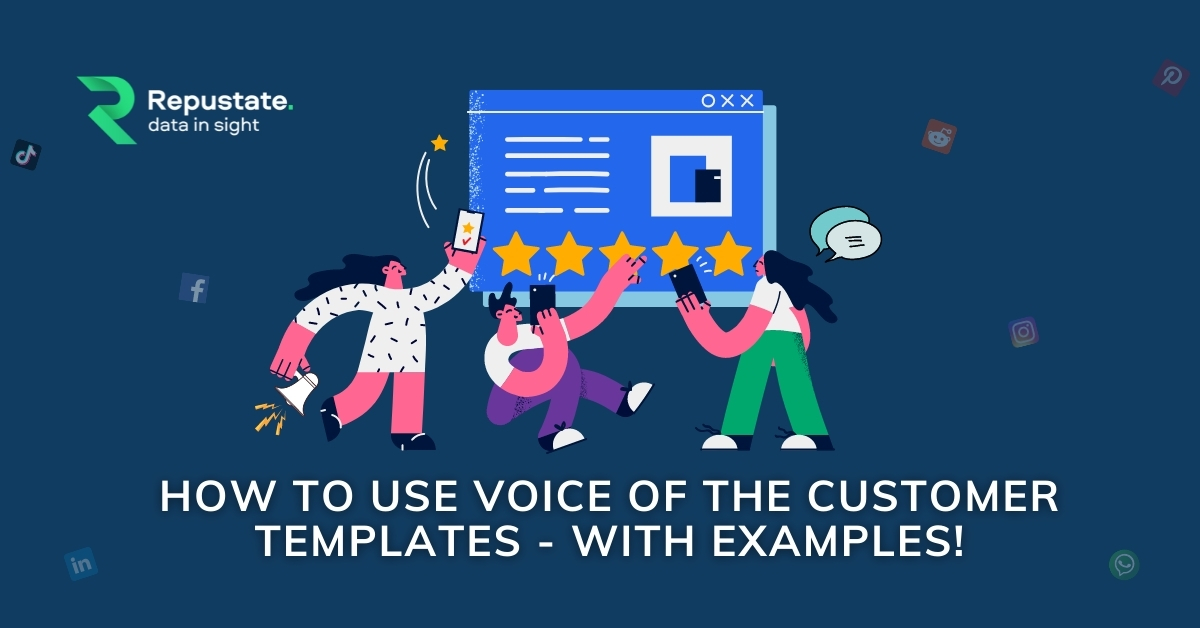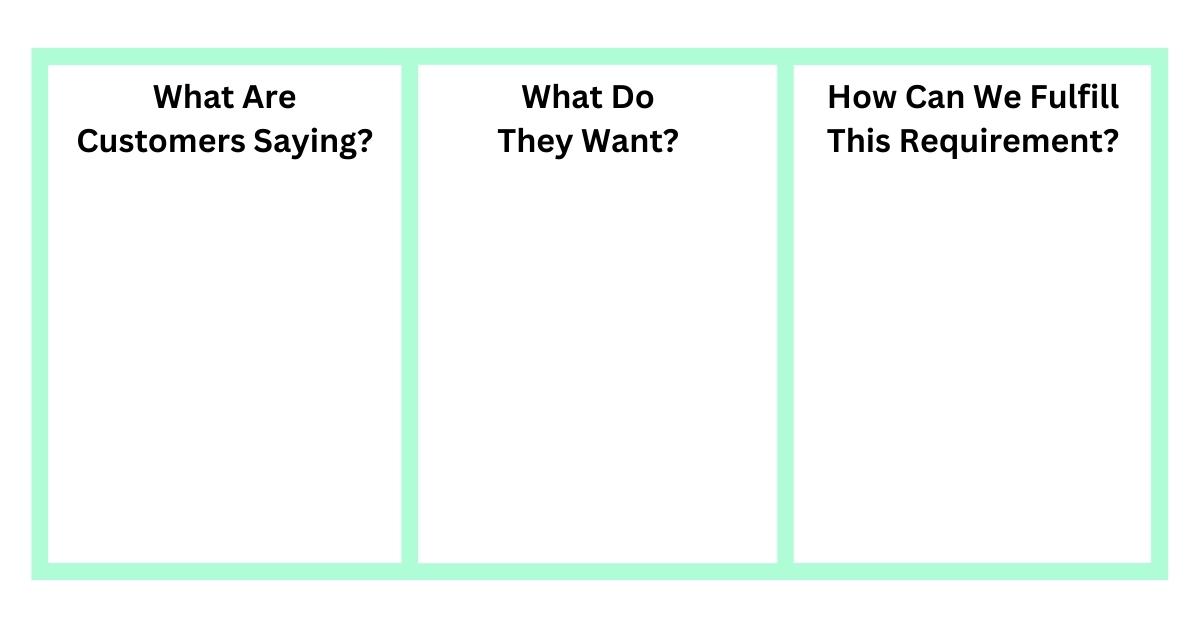How To Use Voice Of The Customer Templates - With Examples!
A voice of the customer template is a checklist for VoC-specific questions to understand your customers’ wants, needs, expectations, and preferences. In this article, we highlight why exactly a VoC template is so important, and how you can use it to fulfill your customer experience requirement. We also showcase business examples, so you know how they work in a real-world scenario.
Creating a VoC Template
A voice of the customer template allows you to see at a glance the opinions and expectations your customer has from your brand. An important element of a voice of the customer template is that you capture what your customer is expressing verbatim. This ensures that there has been no dilution of the issue or comments by way of paraphrasing. You take note of what customers want from you, and this allows you to see a pattern in buyer behavior and/or expectations. This also enables you to implement the voice of customer program see clearly what your action items should be.
Below is an example of a VoC Template:

Click below to download the template.
How is Voice of the Customer Template Used?
The voice of the customer template is closely aligned with your voice of the customer process. When you have addressed what the needs of your customer are, you take the opportunity to assess your voice of the customer strategy, which includes the data sources, the sentiment analysis platform of your choice, and a well-thought-out strategy to put into action your plans after studying the insights. Let’s see how they’re correlated a bit more closely.
Step 1 - Identify what customers are saying
This is the stage where you first identify the business requirement as to why you want to begin this project and then devise the right questions to ask of your customers. This is very important because asking the right questions will give you the insights into “What customers are saying?” about a business aspect or business as a complete offering. You should find the right avenue to reach out to them as well. Whether it’s on a one-on-one basis by way of a voice of the customer survey, NPS, or if it’s by asking for feedback through public social media channels like Twitter or Facebook. All their responses should be recorded verbatim so there is no essence lost in paraphrasing.
Step 2 - Decipher what they want/need
The data in this part of the VoC template will highlight what the customers need. This is an analysis that is made based on the feedback that is received verbatim from the customers in the first stage. This step includes the complete voice of the customer process that includes:
1: Identification of data sources (text/audio/video)
2: Processing of the data (audio transcription/caption overlay/image recognition/text extraction)
4: Visualization of the resultant data (understand need)
Learn more about the VoC process.
Step 3 - Develop Strategies to meet this requirement
In this part of the voice of the customer template, we make sure that we decode what exactly must be done in order to meet the customer’s needs and wants, and to make sure that any negative feedback from the customer is treated as an action item.
How Can I Use The VoC Template?
The real-life business examples presented in this section showcase the fact that the voice of the customer template can be applied in a variety of industries. This is because the aim of a VoC template is to fundamentally find out what exactly customers require from a business and what are the ways in which a company can address those needs. The following use cases illustrate how VoC templates have been used to provide clients with solutions that they need with the help of a text analytics API and sentiment analysis platform.

1. Banking
A major bank based in Johannesburg wanted to make sure that it maintained its top spot in the highly volatile sector of banking and finance. It wanted to ensure that it reduced churn and maintained customer loyalty by analyzing customer experience (CX) to meet expectations and thus ensure growth. Below is a voice of the customer template developed for this business case, which eventually helped the organization in developing the right strategies for continued success.
What are customers saying (verbatim)?
-
“I like the bank but not sure if I’d refer it to others because I prefer online banking and it has never been easy to use their website.”
-
“I never seem to find any service available when I come during my office lunch-hour and it’s the only time available to me.”
-
“I like that the bank has so many branches, but what’s the point if they close at 5 PM at their downtown location, which is the nearest to me, when they can clearly see the long winding line of customers?!”
-
“I wish I could do more than just transfer funds in my online banking. It’s so frustrating! I end up having to go to the bank, and if I’m there during lunch hour, there’s no teller available and I have to wait for more than 40 minutes.”
What do they want/need?
-
Faster customer service.
-
User-friendly online banking.
-
More features online.
-
Reduce bottlenecks in physical banking.
How can we meet this requirement?
-
Ensure there are more tellers during customer rush hours like lunchtimes.
-
Overhaul website to make information clearer and more accessible.
-
Make sure that bank branches with more footfalls remain open for an extra hour.
-
Easier online banking so that customers can save time and effort by avoiding physically coming to the bank.
-
Make sure that a sentiment analysis platform captures all the customer feedback as these changes are being made so that current and past data can be analyzed to see the difference in customer satisfaction.
2. Market Research
A new entrant in the ready foods market wanted to ensure that it was making the right decision regarding the time of entry in the market. It wanted to know if the market was saturated or not, who was their biggest competitor, what people’s opinions were on healthy snacks, and what was on their mind when they thought of healthy snacks. This voice of the customer template helped them achieve their goal and ensure that they were getting their money’s worth with regard to their investment.
What are customers saying (verbatim)?
-
“I like healthy snacks but as they say, what’s healthy is not always tasty.”
-
“Yeah, I eat healthy. Greens and fruits are my go-to.”
-
“I usually have a bag of baby carrots ready!”
-
“An apple a day, I guess. It’s the safest, best way, to beat those hunger pangs.”
What do they want/need?
-
Healthy snacks that are not tasteless
-
Easily available anywhere
-
Hasslefree
-
Tasty
How can we meet this requirement?
-
There are no branded competitors, so it means no competitive advertising.
-
The snack needs to be easily available in stores everywhere.
-
Have a soft entry to test the market and collect feedback to make product, packaging, and marketing changes.
-
Decide if product diversification needs to be focussed on adults and children.
-
Need to use a sentiment analysis solution to keep a tab on market sentiment during the soft launch of the product and subsequent market research. (This is where your voice of the customer template will guide you towards avenues outside your company.)
3 Education
An educational mobile app developing company needed to ensure that it was meeting the requirements of its client by creating an app that was easy to use and provided all the necessary information to the public. For this, it deemed it necessary to listen to the very people using the app i.e. students and their wards. This VoC template helped them achieve this goal.
What are customers saying (verbatim)?
-
“I cannot find anything that I’m looking for because the contents in the education website repository are not in any order.”
-
“I want to access the Arabic videos, but the website does not allow me to search in Arabic. It’s only in English.”
-
“I wish I could only get Maths videos, but I’m not able to search for them because the videos are not listed by subject.”
-
“I want to have access to the app but currently it only allows access to the primary user, and that’s my 7-year-old.”
-
“We need to be able to use old education material as well, but currently only the new ones are available.”
What do they want/need?
-
Customers want all the content of the education website to be listed according to language, subject, format, etc.
-
There should be a way to use old content as well so that the material can be revamped and utilized.
-
The app must be accessible to the student as well as their ward.
-
App security is of utmost importance.
-
All videos should be listed separately from text and image content.
How can we meet this requirement?
-
There is a need to use a video content analysis tool to make sure that all videos are annotated correctly and analyzed for their contents.
-
All the feedback received from the public to see if they are happy with the app or not needs to be analyzed for sentiment to see the details of the aspects that they are happy or unhappy with.
-
The app needs to be modified so that it is secure as well as accessible to multiple users.
-
Arabic content and English content need to be analyzed and segregated.
-
There is a need for a Video AI and sentiment analysis platform that uses native Arabic in its NLP algorithm so that no information is left out or misinterpreted.
What is the importance of a VoC Template?
Upon identifying the sources from where you want to collect your voice of the customer data, you have to decide upon the VoC template you are going to use. This template is very pertinent for the following reasons:
1. To ensure correct data capture
The voice of the customer template allows you to have a record of the data so that you can use it to cross-reference and verify the information gathered.
2. See patterns in consumer behavior
Having a record of customer needs and wants over time allows you to do an analysis and see the patterns emerging behind your customers’ purchase behavior
3. Notice customer motivations
A comparative analysis of the data allows you to see what motivations customers have for buying certain products or services, and why they have the opinions they have about them.
4. Measure feedback value
All the findings you can gain by the customer feedback analysis can be assigned quantitative measurement so that you know how important certain elements are to the majority of customers.
5. Product differentiation
Your voice of the customer template can tell you a lot in terms of what product differentiations you can have to stay apart from the competition and grow.
6. Service improvement
Having all the information and insights in the form of a VoC template allows you to see what general service improvements you can make to ensure that your basics are covered, if not the finer details.
7. Build business strategies
All the review data you collect and analyze on the template enables you to find new avenues of increasing business and developing strategies for sales and marketing efforts.
8. Advertising insights
The voice of the customer data collected on your voice of the customer template gives you a lot of insight into what kind of advertising and branding will have the most impact on your business.
9. Bridge communication gaps
Since you can see all your customer feedback on your VoC template verbatim, you can also see what kind of communication gaps there are between how you perceive your customers’ relationship to be and what it actually is. You can take measures to ensure that you have the right engagement strategy with your customers.
10. Reduce customer churn
Making sure you have all the customer feedback right from the horse’s mouth also means that you get to see right through what will help motivate customer loyalty.
11. Competitive intelligence
Depending on the kind of questions you ask in your VoC template, you can very easily get insights into what exactly your customers like about your competitors’ products or services that you don’t currently have. You can use this information to your advantage and build a strategy to use this intelligence.
12. Brand evaluation & amplification
The feedback you receive from your customers can also guide you to efforts that you can use to improve your brand’s reputation. You can explore avenues to enhance brand awareness through social media, radio, television, print, or other means depending on the demographic segmentation of your target audience.
Learn more about the benefits of Voice of Customer analysis.
Enrich CX With Repustate
Voice of the customer data analysis helps companies be swift on their feet at a time when consumer loyalty and preferences can be fickle. Use a voice of the customer template to your benefit like these companies mentioned above have and get ahead of the game with Repustate IQ, the all-in-one sentiment analysis platform for improved customer experience.
 Home
Home
 Sep 28, 2021
Sep 28, 2021


 Jeremy Wemple
Jeremy Wemple
 Dr. Ayman Abdelazem
Dr. Ayman Abdelazem
 Dr. Salah Alnajem, PhD
Dr. Salah Alnajem, PhD
 David Allen
David Allen

 Repustate Team
Repustate Team

